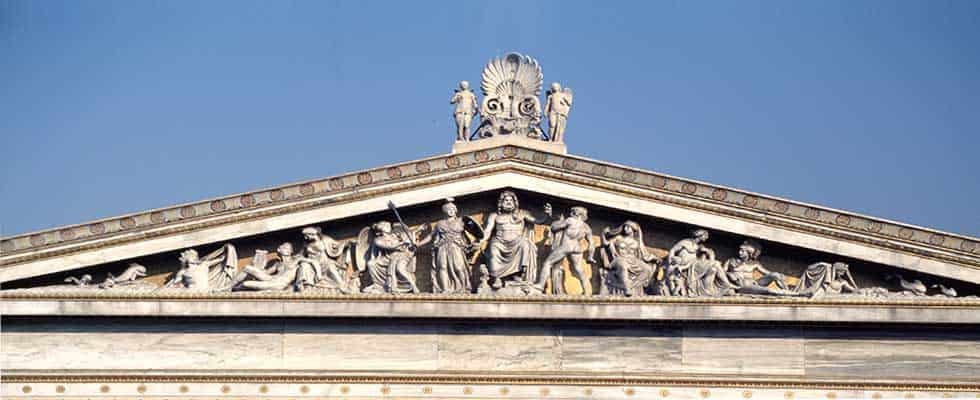The historic Academy of Athens, one of the capital’s most recognisable landmarks, will become a leading zero energy building by tapping heat 100 meters below the surface of the earth.
The 130-year-old building located on Panepistimiou Avenue will go green through the use of geothermal energy and solar panels, according to the Academy’s general secretary Christos Zerefos.
It is the first time that geothermal power, which draws energy from deep within the earth’s core, will be used by a main building in central Athens.
Drilling for the first well at a depth of 100 meters has already been completed with drilling on another 17 wells expected soon, Zeferos told state news agency ANA-MPA. Liquid filled pipes running down the well will help cool the building in summer and warm it up in winter with the help of pumps, controlling its temperature throughout the year.
"In combination with the replacement of window frames, the energy interventions ensure zero energy consumption, zero greenhouse gas emissions and full energy autonomy for a historic Athens building," he adds.
The Academy of Athens is Greece's national academy and the highest research establishment in the country. It was established in 1926, and operates under the supervision of the Ministry of Education.
The building was designed as part of an architectural "trilogy" in 1859 by the Danish architect Theophil Hansen, along with the University and the National Library. Funds had been provided by the magnate Simon Sinas specifically for the purpose, and the foundation stone was laid on 2 August 1859.
The building was initially used to house the Numismatic Museum in 1890, and in 1914 the Byzantine Museum and the State Archives. Finally, on 24 March 1926, the building was handed over to the newly established Academy of Athens.
It is considered to be the most important work of Hansen, and is regarded by some experts as the most beautiful neoclassic building worldwide.
The architect's source of inspiration was the classical architecture of fifth century B.C. Athens, as portrayed in the monuments of the Acropolis, the Academy of Athens says on its website.
In particular Hansen emulated the aspects of the Ionian rhythm that dominate the Building of the Academy, from the Erechtheion monument.
The epitome of all ancient Greek tradition can be found in the building's sculptural and pictorial decoration; simultaneously the character of that era's Hellenism and its visions for the future are also expressed.


